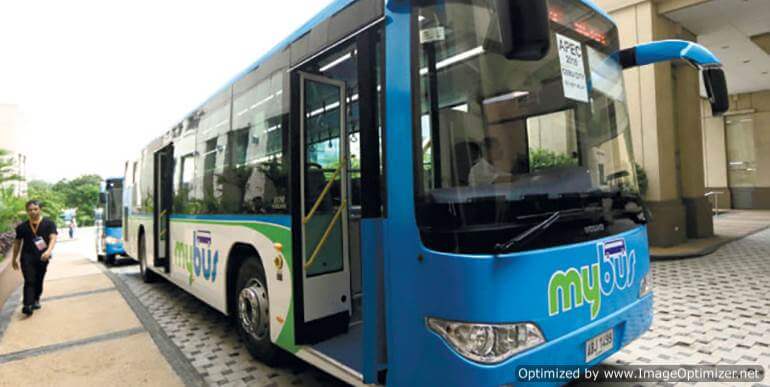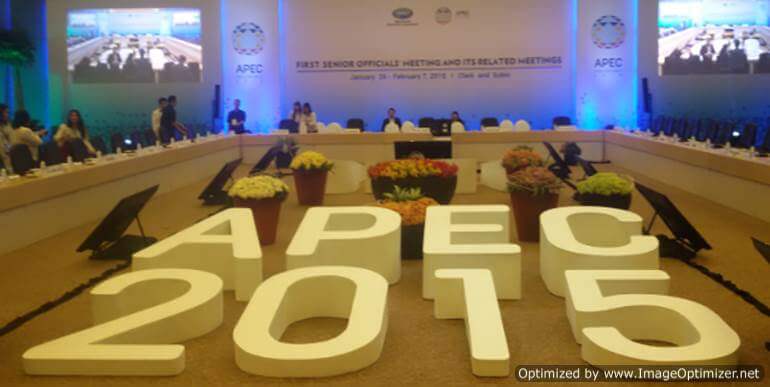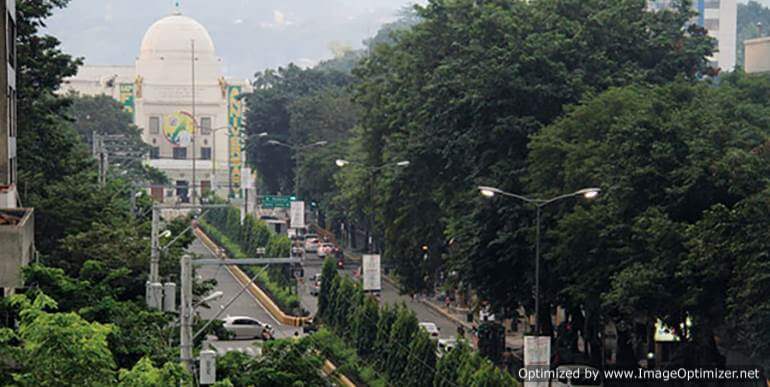
A FLEET of 77 buses will soon serve commuters in Metro Cebu, with almost half of them expected to be operational by the end of next month.
Marissa Fernan, vice president of SM Prime Holdings Inc., said the buses will not displace jeepney operators and drivers because the buses will take “underserved” routes, including the South Road Properties (SRP) and the coastal road along the reclamation area of Cebu and Mandaue Cities.
The SM Prime Holdings, through its subsidiary Premier Southern Corp., is investing over P1 billion for the Metro Rapid Transit System Inc. (MRTSI), which will operate the buses called MyBus in the cities of Talisay, Cebu, Mandaue and Lapu-Lapu.
The proposed fares are P25, P40 and P75, depending on the route, but the rates have yet to be approved by the Land Transportation and Franchising Regulatory Board (LRFRB).
Fernan said the buses will not add to the heavy traffic since these will ply along routes not served by jeepneys.
Size
Each of the buses are 12 meters long and air-conditioned. They are also equipped with WiFi, global positioning system and passenger information system, where estimated time of arrival and other information are flashed in monitors inside the bus.
“It’s really a state-of-the-art bus,” said Fernan.
Secretary Joseph Emilio Abaya of the Department of Transportation and Communication (DOTC), who checked one of the buses yesterday, expressed support for the latest venture of SM Prime Holdings.
“Ito yong modelong bus na nararapat sa atin (This is the right bus model for us),” he said, pointing out that the buses use engines that do not pollute the air.
He also noted that the buses have features needed by persons with disabilities.
“This is an expensive model, but clearly the investment is worth it,” he said.
He said the DOTC has always supported buses as a mode of transportation as these can carry more passengers. He urged car users to take the buses instead of driving their cars to not add to the volume of vehicles on the road.
Each bus has 42 seats, but it can accommodate up to 90 people as passengers can also stand.
Can the buses brave Metro Cebu’s flooded streets?
Jimenez said the floor of the buses can be raised by up to 100 millimeters.
Fernan said their buses are at par with those in major cities in the world.
To ride the bus, the passengers will use the e-PLUS card or tap-to-pay cards that can be bought at the SM malls and at the stations.
Sherry Tuvilla, SM regional operations manager, said the plan is to put up 18 bus stations from Talisay City to Lapu-Lapu City, but some of the locations have yet to be identified.
Intervals in the arrival of the buses for each station will be about nine minutes, she said.
Stations
Among the identified stations are in the SM Seaside City in the SRP, Parkmall in Mandaue City and in the Mactan Cebu Internation Airport.
Tuvilla said the construction of the first batch of stations will soon start.
Rico Villaluna, general manager of the Metro Rapid Transit System Inc. said the estimated time of travel from Talisay City to the Mactan Cebu International Airport is 45 minutes but they have to test this.
Fernan said 31 buses will be operational in time for the opening of the SM Seaside City on Nov. 26.
The 77 buses will be supplied by Volvo, Mercedez Benz and Daewoo.
Volvo has delivered two buses as of yesterday. Three buses have also been loaned to the MRTSI.
The buses are being used to ferry delegates in the Asia Pacific Economic Cooperation conference from Cebu City to Lapu-Lapu City and vice versa.
Villauna said the three car manufacturers will have delivered 31 buses by next month.
The LTFRB has set the hearing for the franchise of the buses and the rates on Oct. 16.
Four routes are being proposed: Mandaue City to Mambaling, Cebu City; Talisay City to Mambaling; Talisay to Mandaue City; and Talisay to Mactan airport.
Tony Jimenez, Volvo’s vice president for manufacturing, said the buses pass the European standards on carbon emissions.
Source: Rebelander S. Basilan | Sun Star



